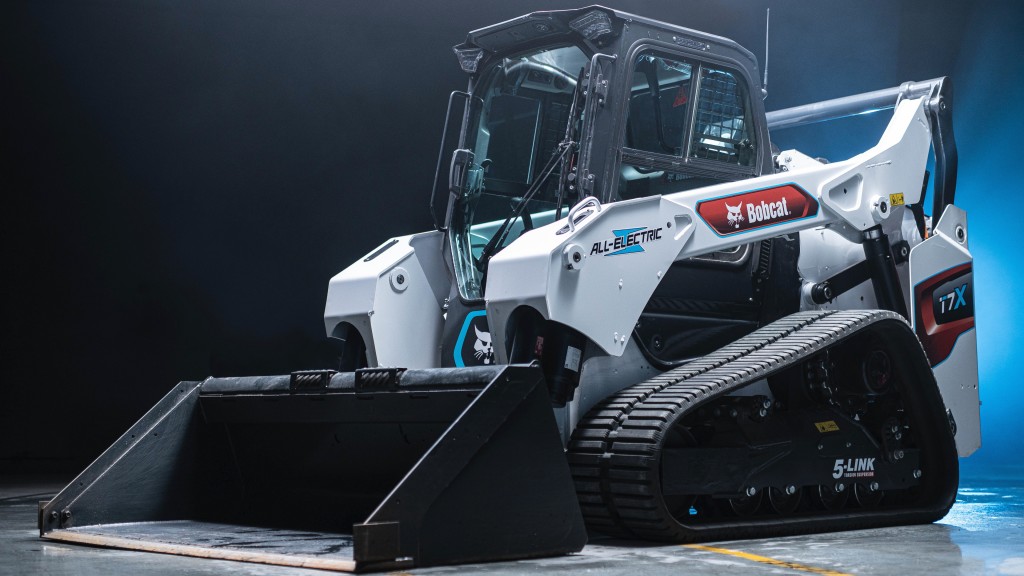What to consider when selecting a hydraulic flow option for your skid-steer or compact track loader

Skid-steer and compact track loaders are go-to machines for getting a range of tasks done on job sites large and small, and one of their biggest advantages is maneuverability combined with countless attachment options. When selecting a skid-steer or compact track loader, choosing the right hydraulic option is essential for maximizing the utilization of your investment. CASE Construction Equipment explains what those options are and what you should consider when selecting a hydraulic flow option for your SSL or CTL.
What different levels of hydraulics are available for skid-steer and compact track loaders?
There are three hydraulic options for skid-steer and compact track loaders: standard flow, high flow, and enhanced high flow.
Standard-flow hydraulics
Standard-flow hydraulics is the most popular option for SSL and CTL owners; flow rates will differ by manufacturer and model. Standard flow typically runs between 17 and 24 gpm and is included on all machines from the factory. Standard flow operates on the same pressure that the carrier's main hydraulics operate on - 3,000 to 3,500 psi. Standard flow hydraulics can power four-in-one buckets, hydraulic hammers, breakers, trenchers, and grapples.
High-flow hydraulics
High-flow hydraulics further increases the carrier's productivity and versatility. High flow also operates on the same pressure as the main hydraulic circuits, but the flow rate ranges from 30 to 42 gpm. High-flow hydraulics can be installed at the factory or added later in the field. Attachments that benefit from high-flow hydraulics include cold planers, snow blowers, rock saws, small mulchers, and chippers/shredders.
Enhanced high-flow hydraulics
Enhanced high-flow hydraulics have flow rates similar to a skid steer with a high-flow package, but operate at 4,100 psi.
Attachments that are suited to enhanced high flow include large cold planers, rock saws, and mulchers.
What is the secondary circuit for?
The secondary circuit provides additional function for an attachment, such as a side-shift function on a cold planer or stump grinder, changing the direction of a snow blower chute, or for downriggers.
What is the difference between psi and flow?
Flow will determine the speed of the attachment under no restrictions, so if the maximum gpm on an attachment is 30, that will be the maximum flow delivered to the attachment under perfect conditions with no pressure or resistance to that flow. As soon as flow starts to resist, pressure (psi) builds. It's important to understand what the maximum constraints are for your attachment on the flow and that pressure. At some point the two cross to create the most productive conditions for the attachment. For example, if you have a cold planer that's running at a maximum of 3,000 psi, you'll generate too much heat and not help machine productivity. But, if you back off a bit and reduce some of the resistance to flow, your attachment will run more consistently in speed and won't be fighting against that additional heat generation in the system.
It is helpful for the operator to watch the pressure gauge on the attachment to ensure that the attachment is working at the most productive pressure.
Why is hydraulic horsepower important and what does that mean for productivity and effectiveness?
Hydraulic horsepower indicates what the machine is hydraulically capable of doing, and many attachments are also rated by hydraulic horsepower. This helps to judge the match of the attachment to the machine. For example, it doesn't make sense to put an attachment that can only take 40 hydraulic horsepower on a 90 hydraulic horsepower machine. The reverse is also true - an attachment might be rated with higher hydraulic horsepower than the carrier, which a buyer might think makes it more versatile for more machines, but the drive motor inside the attachment might not be suited to the carrier and can hamper productivity.
Maximize your efficiency with creep control
Carrier features such as creep control are ideal for easy control of the skid steer when using attachments like mulchers and cold planers, enabling the operator to dial in the machine to a precise speed suited to the application. This eliminates any jerking motion that might cause the attachment to stall.
Take the long view when choosing between hydraulics options
Consider high-flow attachments that you may want to run in the future and select a machine from the factory that can handle those applications. This will avoid the expense and time of retrofitting your machine after the fact. If you rent a lot of attachments, then your machine will be ready with that added flexibility. It is important to select OEM-approved attachments for your carrier to make sure that your tools will work with the specs on your machine.



